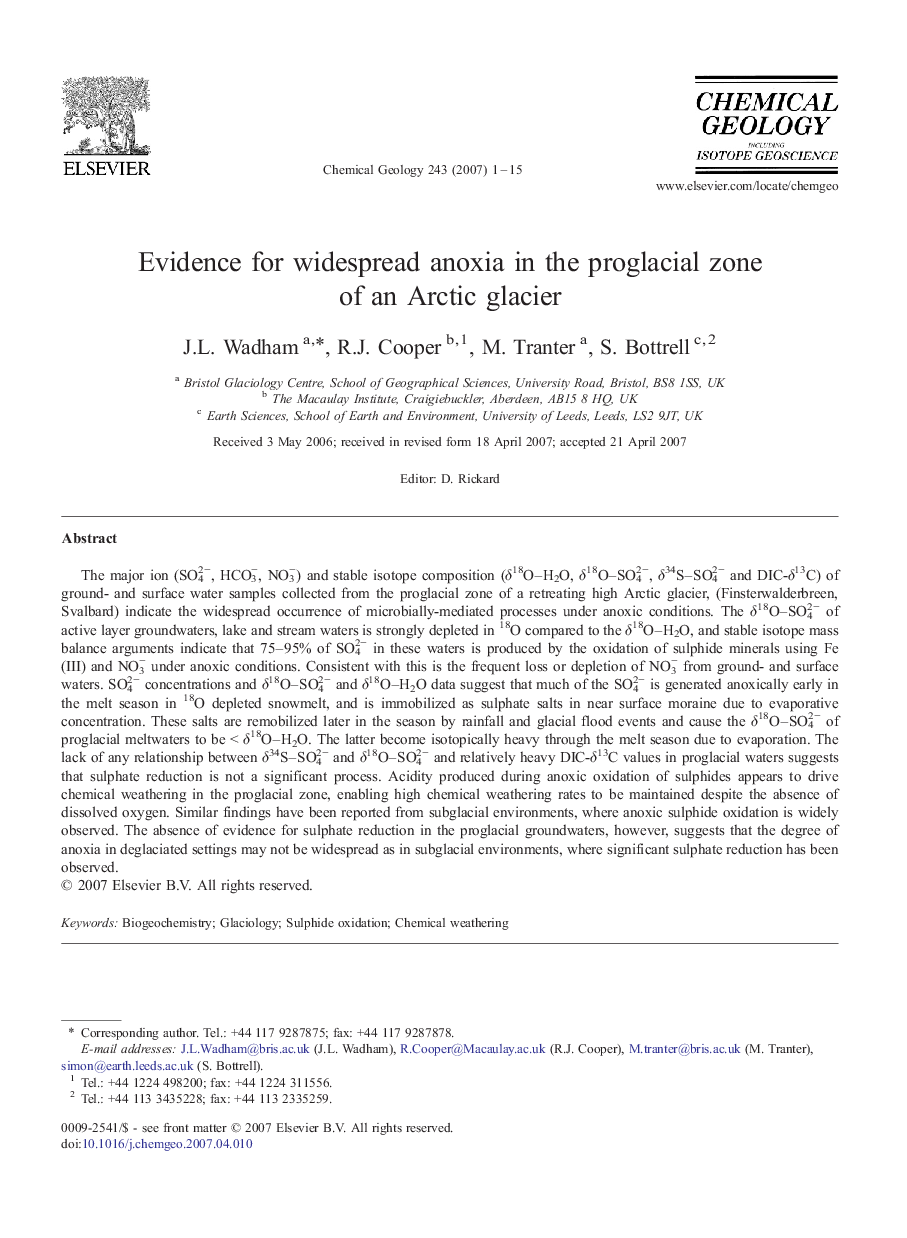| کد مقاله | کد نشریه | سال انتشار | مقاله انگلیسی | نسخه تمام متن |
|---|---|---|---|---|
| 4700814 | 1637744 | 2007 | 15 صفحه PDF | دانلود رایگان |

The major ion (SO42−, HCO3−, NO3−) and stable isotope composition (δ18O–H2O, δ18O–SO42−, δ34S–SO42− and DIC-δ13C) of ground- and surface water samples collected from the proglacial zone of a retreating high Arctic glacier, (Finsterwalderbreen, Svalbard) indicate the widespread occurrence of microbially-mediated processes under anoxic conditions. The δ18O–SO42− of active layer groundwaters, lake and stream waters is strongly depleted in 18O compared to the δ18O–H2O, and stable isotope mass balance arguments indicate that 75–95% of SO42− in these waters is produced by the oxidation of sulphide minerals using Fe(III) and NO3− under anoxic conditions. Consistent with this is the frequent loss or depletion of NO3− from ground- and surface waters. SO42− concentrations and δ18O–SO42− and δ18O–H2O data suggest that much of the SO42− is generated anoxically early in the melt season in 18O depleted snowmelt, and is immobilized as sulphate salts in near surface moraine due to evaporative concentration. These salts are remobilized later in the season by rainfall and glacial flood events and cause the δ18O–SO42− of proglacial meltwaters to be <δ18O–H2O. The latter become isotopically heavy through the melt season due to evaporation. The lack of any relationship between δ34S–SO42− and δ18O–SO42− and relatively heavy DIC-δ13C values in proglacial waters suggests that sulphate reduction is not a significant process. Acidity produced during anoxic oxidation of sulphides appears to drive chemical weathering in the proglacial zone, enabling high chemical weathering rates to be maintained despite the absence of dissolved oxygen. Similar findings have been reported from subglacial environments, where anoxic sulphide oxidation is widely observed. The absence of evidence for sulphate reduction in the proglacial groundwaters, however, suggests that the degree of anoxia in deglaciated settings may not be widespread as in subglacial environments, where significant sulphate reduction has been observed.
Journal: Chemical Geology - Volume 243, Issues 1–2, 30 August 2007, Pages 1–15